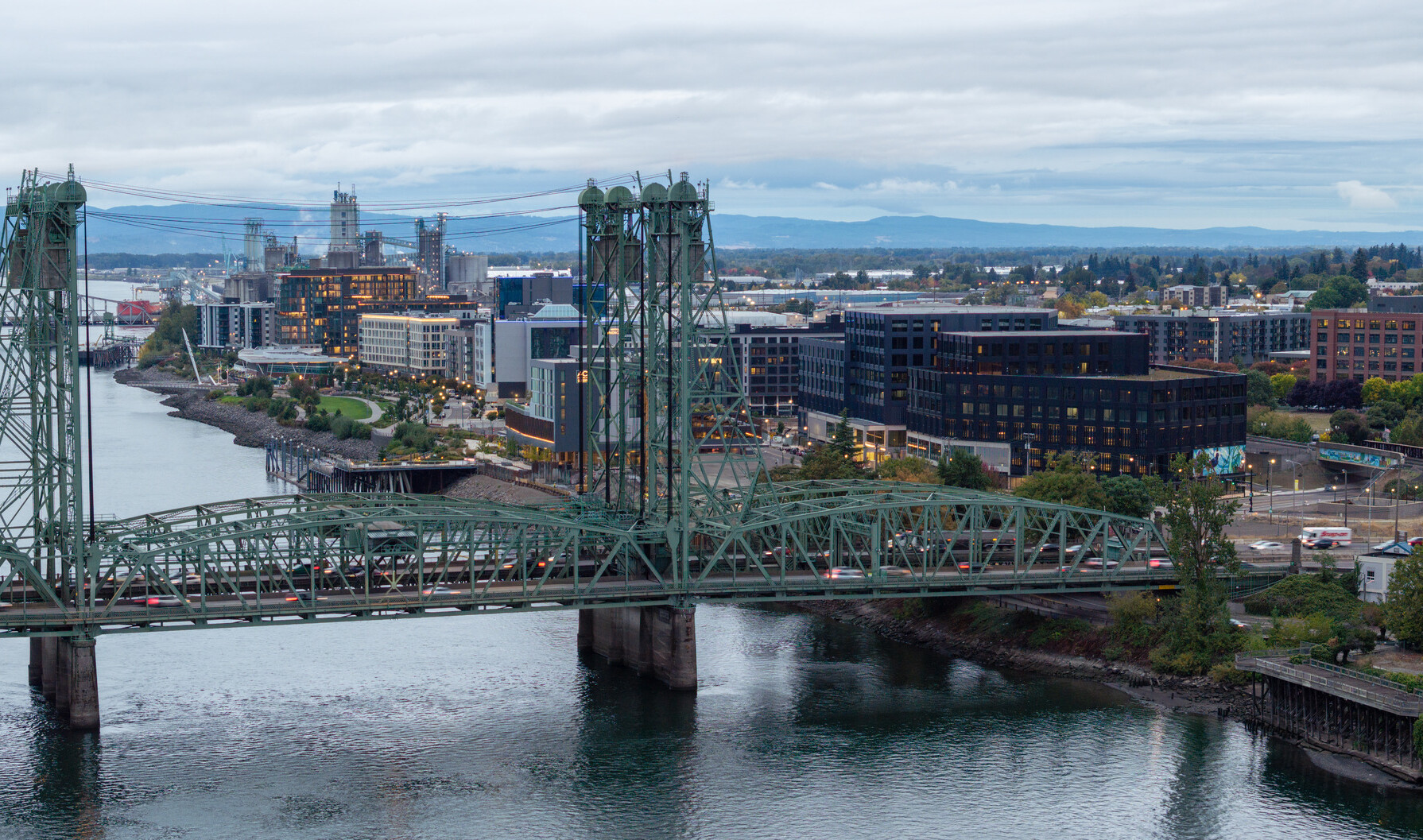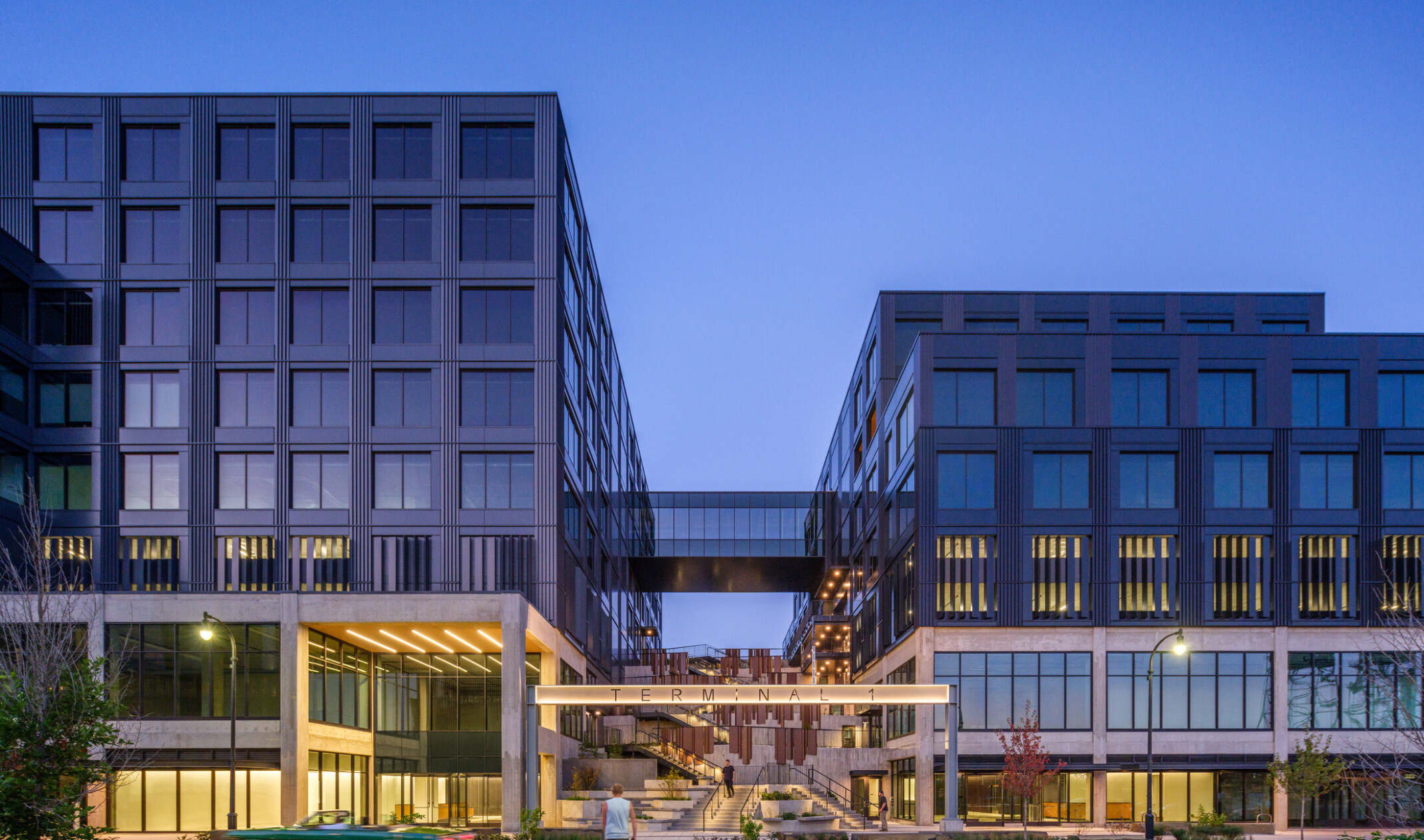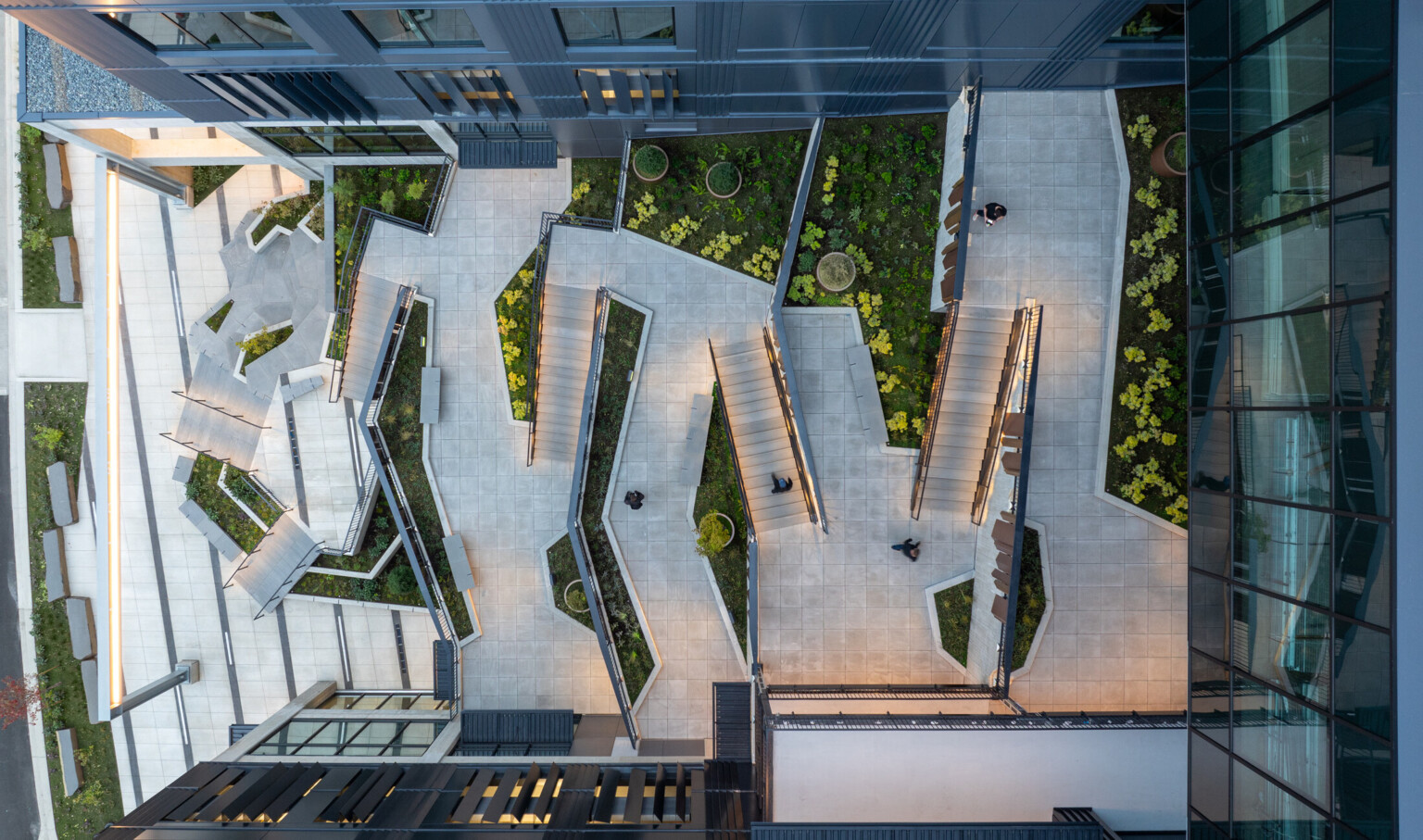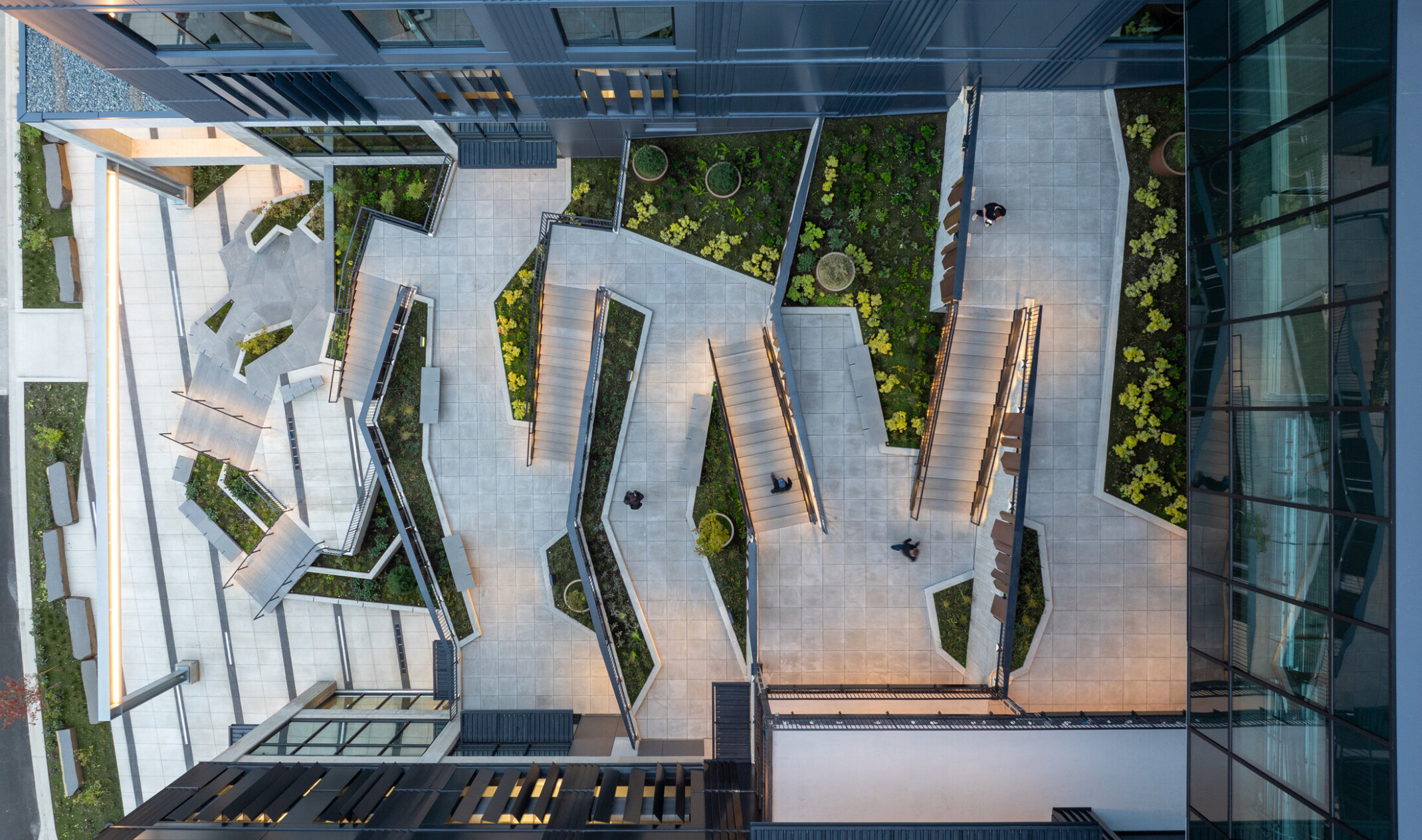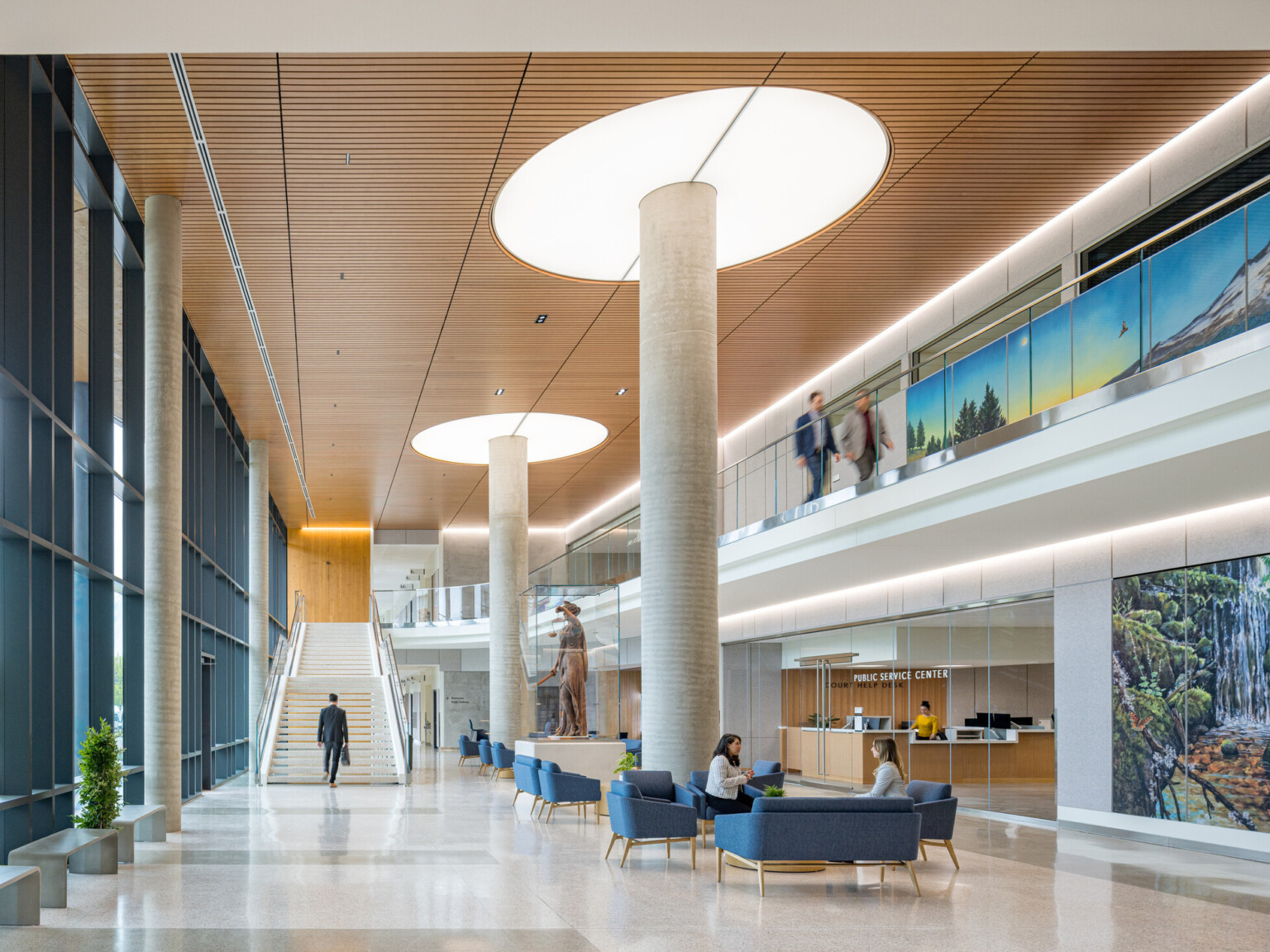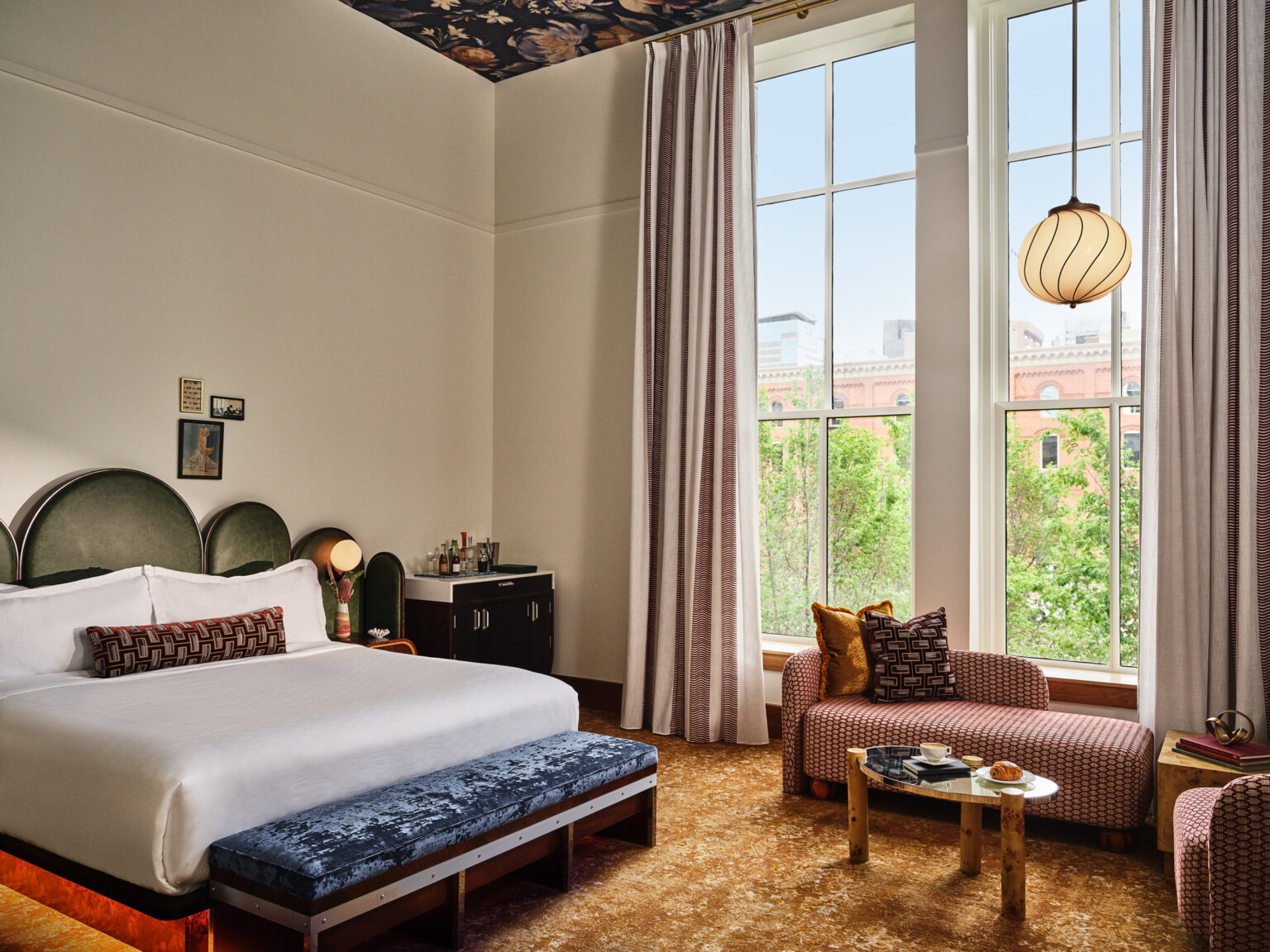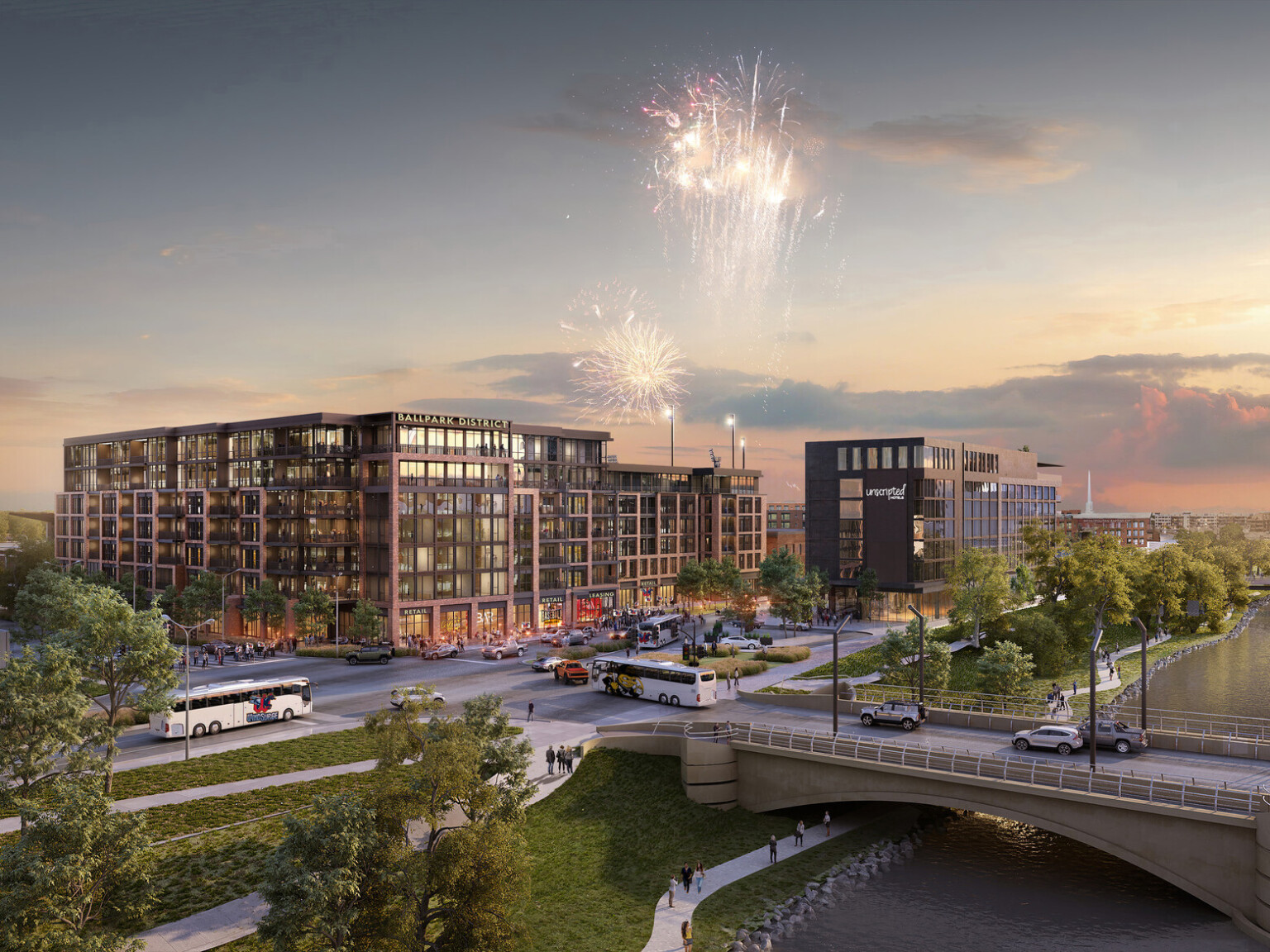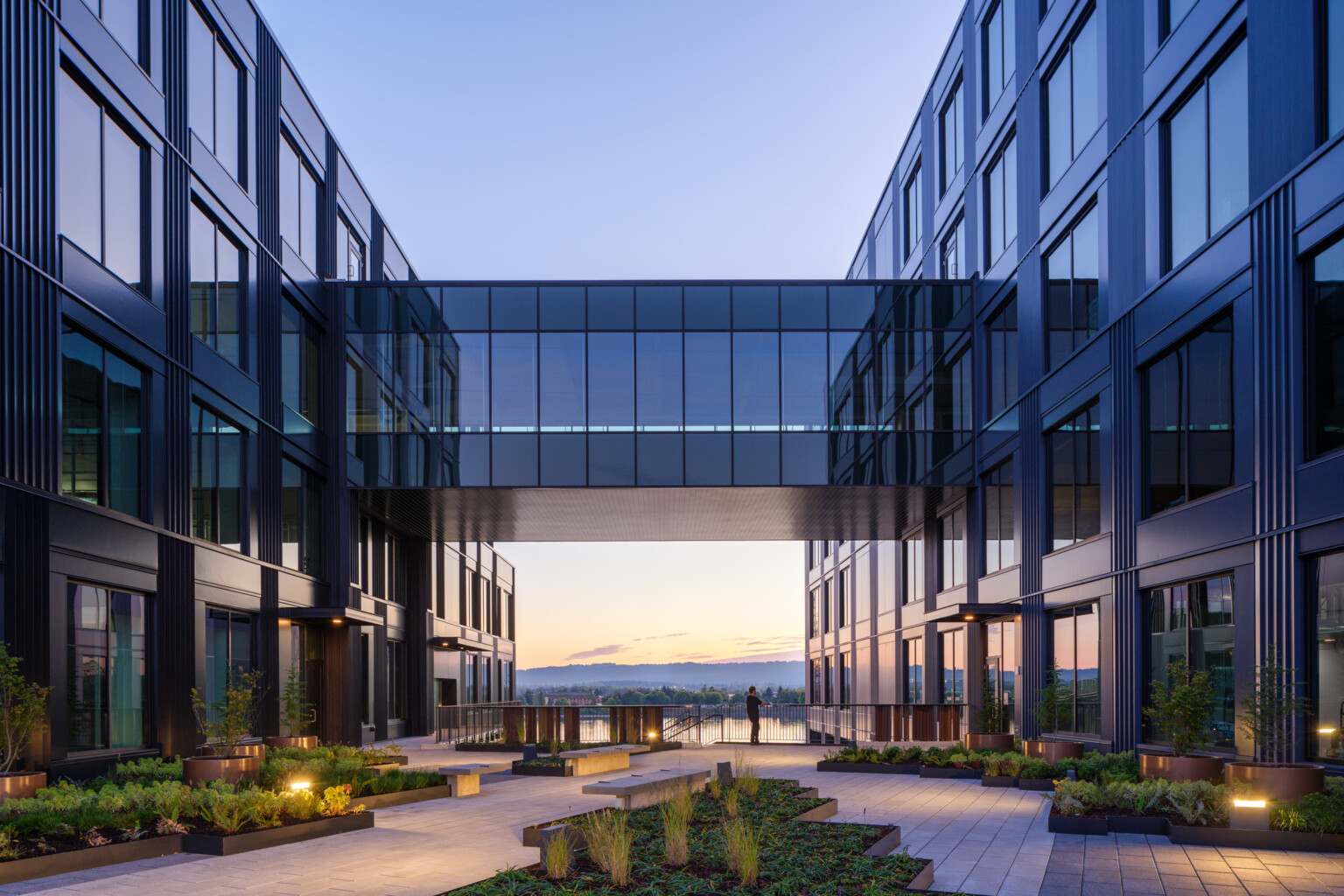
Sustainable Design at Terminal 1: From Port to Workplace Hub
Raising Expectations for the Waterfront
The requirement to pursue LEED certification meant that sustainability had to be embedded in the earliest decisions, from building orientation to material selection. The design moved past a checklist mindset to balance energy efficiency, ecological stewardship, and tenant wellness in ways intended to last for decades. This was particularly critical given the site’s location along the Columbia River, a migratory flyway and ecological waterway where building design directly affects biodiversity. Bird-safe glazing and dark-sky-compliant lighting were not aesthetic choices alone; they were evidence-based strategies to protect vulnerable species and minimize disruption to the natural environment.
Designing for Energy, Water, and Ecology
Energy efficiency began with the massing. By aligning the buildings on an east-west axis, the design minimized unwanted solar heat gain, lowering cooling loads and energy demand. High-performance glazing and sculpted shading fins further reduced glare and moderated interior comfort. These measures allowed the project to cut energy use while preserving daylight and views, creating workplaces that feel both efficient and open to the riverfront. Mechanical systems were right-sized for efficiency, reinforcing the overall energy-conscious approach.
Water stewardship was equally critical. Native and drought-tolerant landscaping reduced irrigation demand by about 75 percent, while green roofs and integrated site systems managed stormwater before it reached the Columbia River. These strategies conserve and clean water, while creating habitats that support pollinators and other species. For people, the landscapes offer shaded places to linger, turning outdoor spaces into part of the daily workplace experience.
Material choices also tell a story of sustainability and resilience. Amid pandemic-era supply chain disruptions, the design shifted to locally fabricated metal panels. This decision reduced transportation impacts, supported the regional economy, and ultimately created a facade that reflects the river in shifting light. What began as a necessity became a defining feature of the project, showing how constraint can spark character and identity.
Connecting People, Mobility, and Wellness
Sustainability at Terminal 1 extends beyond building performance; it also includes mobility and wellness. End-of-trip amenities, generous bike storage, and electric vehicle charging stations make low-carbon commuting a practical option for tenants. Rooftop terraces and outdoor spaces extend the workplace into the open air, encouraging movement, fresh air, and social connection. The project proves that supporting healthier daily choices, whether commuting, eating outdoors, or stepping away from a desk for a river view, is inseparable from reducing environmental impact.
Resilience Through Flexibility and Performance
Terminal 1 Blocks A and C achieved its goals not just by adopting sustainable strategies, but by proving that they could withstand change. The development was conceived during a volatile period, and when market conditions shifted, the program pivoted from an office-residential mix to all office. Even in this uncertain environment, the project secured a full-building lease within 90 days. That success underscores the value of designing places that balance resilience, performance, and tenant appeal. From LEED Gold targets to on-site amenities that support work-life balance, the project’s sustainability story is also a business story: efficiency, wellness, and environmental care attract investment and strengthen community life.
A District That Reflects Place and Purpose
The public realm makes clear that sustainability is not confined to the buildings themselves. The Launch, a terraced pedestrian promenade, links downtown Vancouver directly to the Columbia River. With native planting, integrated seating, and spaces for art, the promenade encourages people to walk, bike, and spend time outdoors. This is where design strategy meets community value: restoring daily access to the water while managing stormwater, providing shade, and supporting habitat. Ground-level retail and dining add another layer of activation, keeping the destination lively beyond office hours. For residents, workers, and visitors, Terminal 1 has become not just a workplace destination but a shared front porch for the city.
Terminal 1 Blocks A and C show that intentional and sustainable design strategies can drive outcomes that go far beyond building performance. Energy-conscious massing, water-wise landscapes, bird-safe glazing, and locally sourced materials all contribute to measurable environmental impact, and they also create places that people want to use and return to. By weaving sustainability into the identity of the project, Terminal 1 has transformed a former industrial edge into a resilient, welcoming part of the city. It demonstrates that when environmental stewardship shapes design from the beginning, the results are spaces that conserve resources, support biodiversity, and enrich daily life. For the Port of Vancouver USA and its community, that alignment is what makes Terminal 1 Blocks A and C both sustainable and memorable.
From vision to outcomes, sustainability starts with shared priorities. Discover how VALUES helps project stakeholders make climate-smart choices together.


